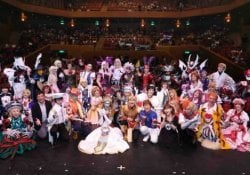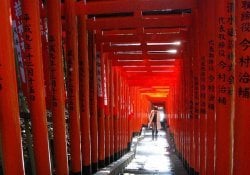Japanese, Koreans, and Chinese are quite different, but their ethnic similarities confuse many people. This is ironic because I find it more difficult to differentiate people from Western or European countries than Asian ones, quickly identifying their origin.
I decided to write this guide to help you differentiate Asians, Japanese, Koreans, and Chinese. First, it is worth remembering that it is not only the Japanese, Chinese, or Koreans who have small or slanted eyes. Most countries in the Middle East and Asia and even the Indians in Brazil have their slanted eyes.
Another interesting piece of information is the word pulled, something that is also an insult even though it is used to describe the difference in the eyes. In both sizes and shapes, Asian and Western eyes are the same; the only thing that changes is that Asian eyes do not have that fold in the upper eyelid causing a more significant part of the eye to be covered by the skin. Simply put, Japanese eyes are neither smaller nor slanted.

Índice de Conteúdo
How to Distinguish Japanese, Chinese and Korean by Language?
The first noticeable difference among Asians is their languages. When you hear a Japanese speaking, you can easily differentiate it from a Chinese or Korean. This is because the Chinese language is tonal and has several variations in the syllables, while Japanese never changes the syllables. Korean, on the other hand, resembles the Chinese pronunciation a little, but it is quite different.

An example that I observe a lot is the pronunciation of the "R". The Chinese do not usually pronounce the R correctly, always speaking the L instead. The Japanese are the opposite, they cannot speak L, because there is no L in the Japanese language.
Another straightforward way to differentiate is by name. Japanese names usually have more than four letters and do not have words with V, M, L, or ending with a consonant. The Chinese and Korean characters end up with consonants, mainly with M, NG, N, and usually have three letters. Of course, you will need to hear the surname if the person is just a descendant with a Western name.
Many believe that Chinese and Japanese writing are practically the same, thus concluding that they are the same languages. We have already written a detailed article explaining differences in Japanese and Chinese languages, you can read by clicking here.

I will summarize by saying that Chinese is full of dashes (他們有理性和良心), Japanese has few dashes in most letters (私はケビンです), while Korean is full of dashes and dots (보기가 역겨워).
Physical Differences Between Japanese, Chinese, and Koreans
It is not easy to determine which Asian nationality is by skin color, but we can see that some Chinese tend to have darker skin, and Koreans have lighter and smoother skin. The face Japanese people tend to be wider, longer and triangular, while Koreans have square chins, more prominent jaws and higher cheekbones. Chinese people tend to have a rounder face.
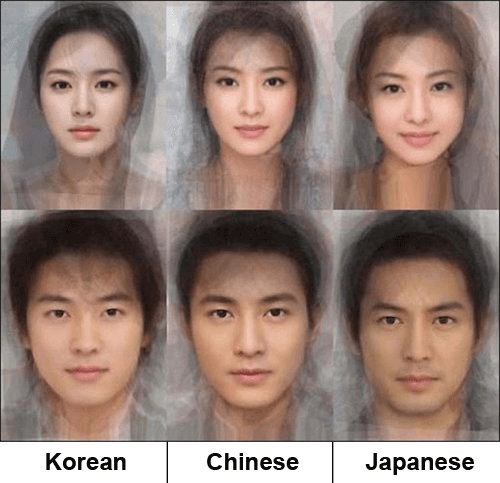
Japanese eyes are usually slanted upwards, unlike Chinese eyes, which are commonly slanted downwards. Koreans, on the other hand, have smaller eyes. heightThe Koreans have an average height of 1.71 meters, the Japanese come in second with an average of 1.69, and the Chinese 1.68.
With respect to hair, nowadays this is very diverse, so it is impossible to define. It is believed that, at least traditionally in the past, Koreans had long hair pulled back. The Chinese had combed and wavy hair and the Japanese hair curved at the end and covered the forehead.
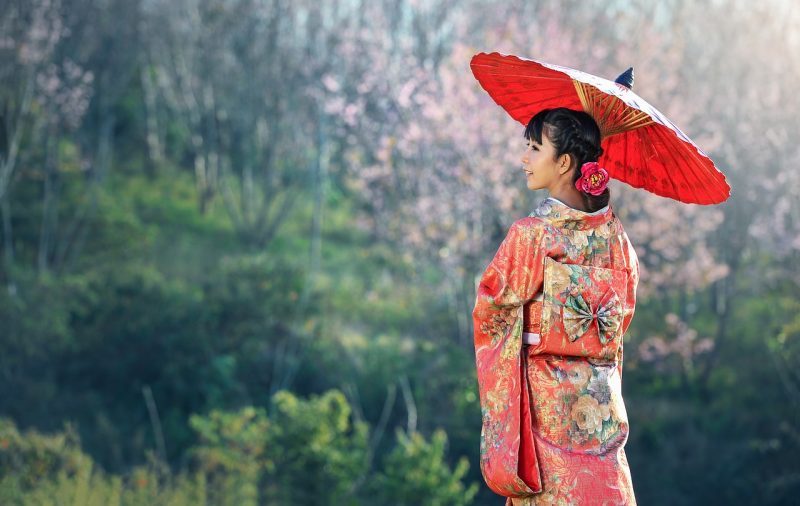
How to differentiate by Style, fashion and culture
Another way we can differentiate Japanese, Chinese and Korean is through their style, fashion and culture. Fashion is relative and goes by very fast, especially in Japan, fashion is very diverse and unique. The Chinese tend to care more about wealth and less about design and colors. So it's normal to find Chinese people with shiny and expensive things, jewelry, gold, and a lot of Western fashion.
In Japan, fashion is a mixture of traditional and modern, in addition to cute thingsColorful and unique. In Japan, fashion and style are very accessible, so young people spend all their time in their school uniform, even outside of school. On the other hand, Korea cares a lot about passing fashion; they follow trends that are fast and care too much for brands; they tend to color their hair more than Japan and China.
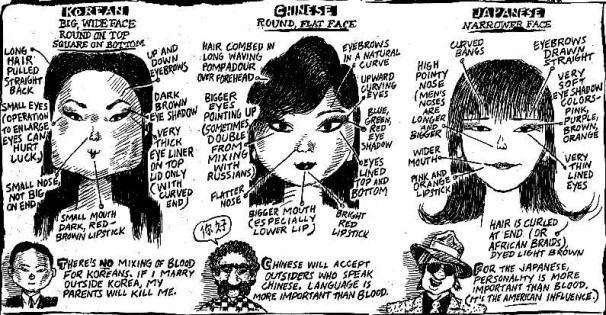
Stereotyped and somewhat racist image released in the old newspaper that received several criticisms.
The Chinese care a lot about reputation and behave In a way with family and another way with friends. Koreans are usually very insistent; they give importance to family, friendship, etc. On the other hand, the Japanese do not like to opine or meddle in the lives of others, preferring harmony with others than following their own opinion.
The article is still halfway through, but we recommend also reading:
Can you already differentiate Japanese, Chinese and Korean?
I'm terrible at memorizing faces, but I can quickly tell an Asian apart by dress, conversation, and other linguistic details. Things get a little more complicated when we are trying to know the origin of a descendant who lives in Brazil, he is basically Brazilian so we don't need to waste time trying to decipher his origins. Just ask!
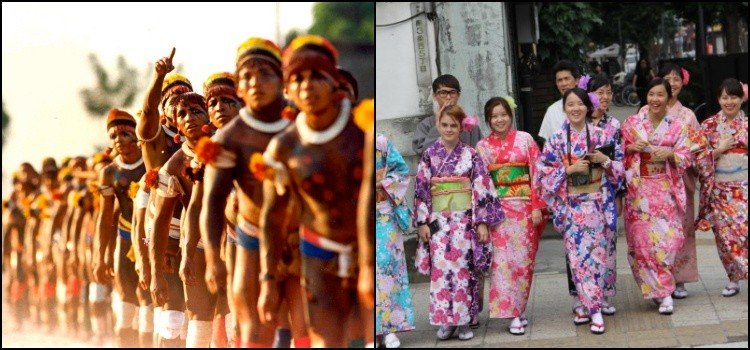
Some claim that there are great Similarities between the Japanese and the Brazilian Tupi Guarani tribe.
The great reality is that Asians are very different and have many variations in their own country. For example, northern Chinese have square faces, small noses and small eyes. Sometimes it can be difficult to tell Japanese from Chinese and Koreans! Countries mix, Koreans get plastic surgery to enlarge their eyes, so it gets kind of complicated.
With a short time in Japan you will realize that Asians or the Japanese themselves are totally different from one another. It's not their fault that food and climate collaborate with a standardized skin, eyes and body.
You might want to read our other article that explains because japanese or asians have slanted eyes.
So in my opinion, the easiest way to differentiate is by language, name and culture. If you think you can tell the difference, test your knowledge by searching for quizzes on google!
Videos to help differentiate Orientals
Thanks for reading our article, don't forget to share and leave your comments! I'll finish by leaving some videos that can help you differentiate orientals:

